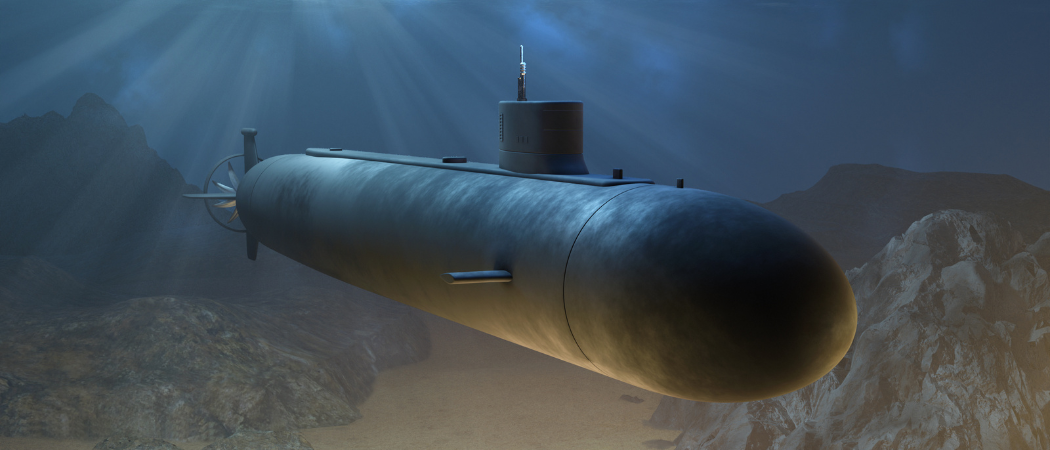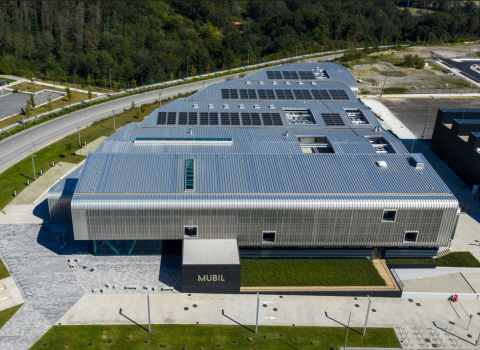The defence sector has been slow to embrace sustainability, but that is beginning to change, as it becomes clear climate change will shape future conflicts

Nuclear-powered submarines can remain underwater for six months, compared to their diesel-powered predecessors that have to resurface every three days to release the fumes.
Sustainable defence might sound like an oxymoron, but both industry and governments are increasingly realising the sector cannot be excluded from Europe’s climate ambitions.
“There’s a perception of defence as not only bad, but also dirty. And that’s something we’re trying to correct,” Deborah Allen, sustainability group director at UK multinational BAE Systems told Science|Business.
At a time when many people are looking to the defence industry with increasing discomfort, as stock prices rise amid conflicts in Ukraine and Gaza, companies are betting on sustainability to attract investors and retain young staff.
Allen is aware of the need to avoid accusations of greenwashing. Companies have been focusing on efficiency for a long time, “but not necessarily because of the sustainability angle,” she admits.
That’s because vehicles which use less fuel are more cost-efficient, more autonomous, and can provide other strategic advantages. Nuclear-powered submarines, for example, can remain underwater for six months, compared to their diesel-powered predecessors which had to resurface every three days to release the fumes.
“Now, we’re coming together and asking, what can we collectively do as an industry sector?” said Allen, who is chair of aerospace, security and defence industry association ASD’s climate and defence task force, launched little more than a year ago.
More and more, companies are trying to implement eco-design concepts, thinking up front about how to make processes more efficient, and products more sustainable, and how to dispose of them at the end.
“Where we can really make a difference is either by changing out a product together, say replacing a fighter jet with a simulation for training pilots, or by changing the fuel they operate on and designing them to be more efficient,” Allen said.
It is difficult to calculate the sector’s carbon footprint, as militaries are selective about the data they publish, but they remain highly dependent on fossil fuels.
For military equipment, emissions are usually broken down into three categories: those which arise during manufacturing, across the supply chain, or from the use of the product. The final category represents around two thirds of the total emissions.
“That’s the more challenging bit,” said Allen. Not only does the operational capability have to be there, but products such as fighter jets take a long time to develop, and can then remain in service for years or even decades, meaning major changes require long-term thinking.
“Plenty of people can tell you how to make steel or concrete in a sustainable way, but not many can tell you how to make a zero-carbon joint strike fighter or Leopard tank,” said Louise van Schaik, head of the EU and global affairs unit at Clingendael Institute, a Dutch think tank.
She says people who advocate for sustainability in defence are seen in the same way as those who talked about decarbonising energy intensive industries 20 years ago: “Naïve idealists who are out of touch with the real world”, van Schaik told Science|Business.
Not that environmentalists have been banging the drum, either. The climate movement has traditionally wanted little to do with the military, although van Schaik says resistance from both sides has been softening in recent years.
Russia’s invasion of Ukraine has since brought a new level of urgency, with longer-term planning no longer the priority compared to replenishing depleted stocks. On the other hand, the way has also shown the benefits green innovation could bring.
“We have seen the vulnerability of diesel supply lines, oil tankers, storage places all being a target of war,” said van Schaik. The conflict has also been a stark reminder of Europe’s dependence on Russia for its energy needs.
There have been technical lessons, too, Allen said. For example, that “solar powered energy packs out in the field are better than lighting a fire to keep you warm because of the infrared footprint that the enemy can spot”.
Strategic advantages
While there are those who fear sustainability will undermine operational effectiveness, there are often operational and logistical benefits to employing green technology.
The growing focus on sustainability is also being driven by the realisation that militaries will not be able to escape the consequences of climate change.
In 2021, NATO adopted a Climate Change and Security Action Plan, which acknowledges the fact climate change can impact vulnerable populations, fuel conflicts, lead to displacement, and undermine security, while also making it harder for militaries to carry out their tasks.
“Greater temperature extremes, sea level rise, rapid changes in precipitation patterns, and an increasing frequency and intensity of extreme weather events test the resilience of our military installations and critical infrastructure, impair the effectiveness of our capabilities, and may create harsher conditions for our military operations and missions,” it says.
The alliance pledged to develop a methodology for analysing greenhouse gas emissions, which it finally published in 2023, and to “study the feasibility of scaling up innovative low carbon technologies through its own procurement practices”.
What the EU is doing
In 2020, the EU published the Climate and Defence Roadmap, which underlines how climate change multiplies threats to international stability, and lays out a series of actions the EU and member states can take.
In its Strategic Compass for Security and Defence, published in 2022, the EU pledged to “enhance the role of green technology and sustainable digitalisation within the armed forces and the defence sector more broadly”.
The document called on member states to develop national strategies to prepare their militaries for climate change by the end of 2023, although most of these are yet to be finalised.
France published its climate and defence strategy in April 2022, and is a frontrunner in addressing sustainability in defence, alongside the UK. in 2020, the French Minister of the Armed Forces presented a Defence Energy Strategy, which aims to reduce the military’s dependence on oil “by integrating new energy technologies and disruptive fuels”, and by optimising consumption.
The objective is to make the green transition “an operational asset” by reducing logistical emissions and energy costs “in a context of increasing resource scarcity”, the ministry told Science|Business. It cited sustainable fuels, hydrogen, and hybrid motors as technologies which are being studied, but insisted operational effectiveness would “always take precedence”.
“It is also important to showcase what the armed forces are doing for the green transition, particularly to better recruit, retain and support young people,” it added.
These green objectives “are not fundamentally called into question” by the war in Ukraine, the ministry said.
The European Defence Fund will be one of Europe’s key tools for stimulating green innovation, and it already supports projects in this area, including one, dubbed INDY, which aims to develop a roadmap towards energy independent and efficient deployable military camps.
The European Defence Agency, which promotes integration between member states, is also working on concrete actions. It recently launched a project focused on developing the circular economy for body armour.
Dual use
While decarbonising the military presents some unique hurdles, a lot of the technological challenges are common to other industries.
The defence sector can learn from improvements in the civil sector, particularly when it comes to advancements in fuel usage and materials, said Allen. Militaries including the UK and Sweden have already undertaken test flights using waste-based sustainable aviation fuels.
Allen expects the civil sector to get there first in many cases, as there is more of a commercial incentive and ability to scale, and the defence sector is less prone to taking risks. “It’s got to have been proven and tested, so it’s necessarily going to be a step behind on some of these things,” she said.
In January, the European Commission launched a public consultation with a view to reforming EU research programmes to support more dual use technologies, which have both civil and defence applications.
“Greater alignment and greater visibility so it can be more in-step would be great,” said Allen. As long as this is incremental and “doesn’t take money from elsewhere or dilute the overall impact”, she added.
Van Schaik also believes dual use research would allow bridges to be built between climate research funded by Horizon Europe and the defence sector. She argues the military can also be a “test bed for future innovations”, the way it has been for technologies from semiconductors to the internet. The question now is whether military decision makers are ready to embrace sustainability.





 A unique international forum for public research organisations and companies to connect their external engagement with strategic interests around their R&D system.
A unique international forum for public research organisations and companies to connect their external engagement with strategic interests around their R&D system.